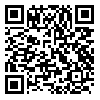Volume 3, Issue 1 (3-2012)
jdc 2012, 3(1): 45-61 |
Back to browse issues page
Download citation:
BibTeX | RIS | EndNote | Medlars | ProCite | Reference Manager | RefWorks
Send citation to:



BibTeX | RIS | EndNote | Medlars | ProCite | Reference Manager | RefWorks
Send citation to:
Malekmohammadi M, Tehrani H A, Aghdami N. Effects of adipose derived stem cell-conditioned medium (ADSC-CM) on synthesis and degradation of yaluronic acid in human dermal fibroblasts. jdc 2012; 3 (1) :45-61
URL: http://jdc.tums.ac.ir/article-1-10-en.html
URL: http://jdc.tums.ac.ir/article-1-10-en.html
Abstract: (10329 Views)
Background and Aim: Synthesis of extracellular matrix (ECM) is a key factor in wound healing. The predominant component of ECM is hyaluronic acid (HA). Recent studies have shown that adipose derived stem cell-conditioned medium (ADSC-CM) can increase the expression and synthesis of collagen I, III and fibronectin which are the components of ECM. The purpose of this study was to investigate the effects of ADSC-CM on the expression of HA synthase and degrading genes in human dermal fibroblasts (HDF).
Methods: ADSCs were isolated from three liposuction samples and their conditioned medium was collected. Skin biopsies were isolated from six patients and their fibroblasts were isolated. These cells were cultured in 100% of ADSC-CM. Expression of three HA synthase and two hyaluronidase genes were assessed with the use of real time PCR, with ELISA and final amounts of secreted HA were measured in the treated and control groups.
Results: Gene expression of two HA synthase genes HAS1 and HAS2 were upregulated in treated samples compared to the control group. The expression of one hyaluronidase gene, HYAL2, was downregulated in them. Final amount of HA was increased in the treated samples.
Conclusion: The expression and synthesis of HA can be increased by the stimulatory effect of growth factors present in ADSC-CM. Thus, secretomes of ADSCs could play a crucial role in wound healing by up-regulating the production of ECM’s components in HDFs.
Keywords: exteracellular matrix, human dermal fibroblast, adipose derived stem cell-conditioned medium, hyaluronic acid, wound healing
Type of Study: Research |
Subject:
General
Received: 2011/11/27 | Accepted: 2012/02/13 | Published: 2013/07/17
Received: 2011/11/27 | Accepted: 2012/02/13 | Published: 2013/07/17
| Rights and permissions | |
 |
This work is licensed under a Creative Commons Attribution-NonCommercial 4.0 International License. |





